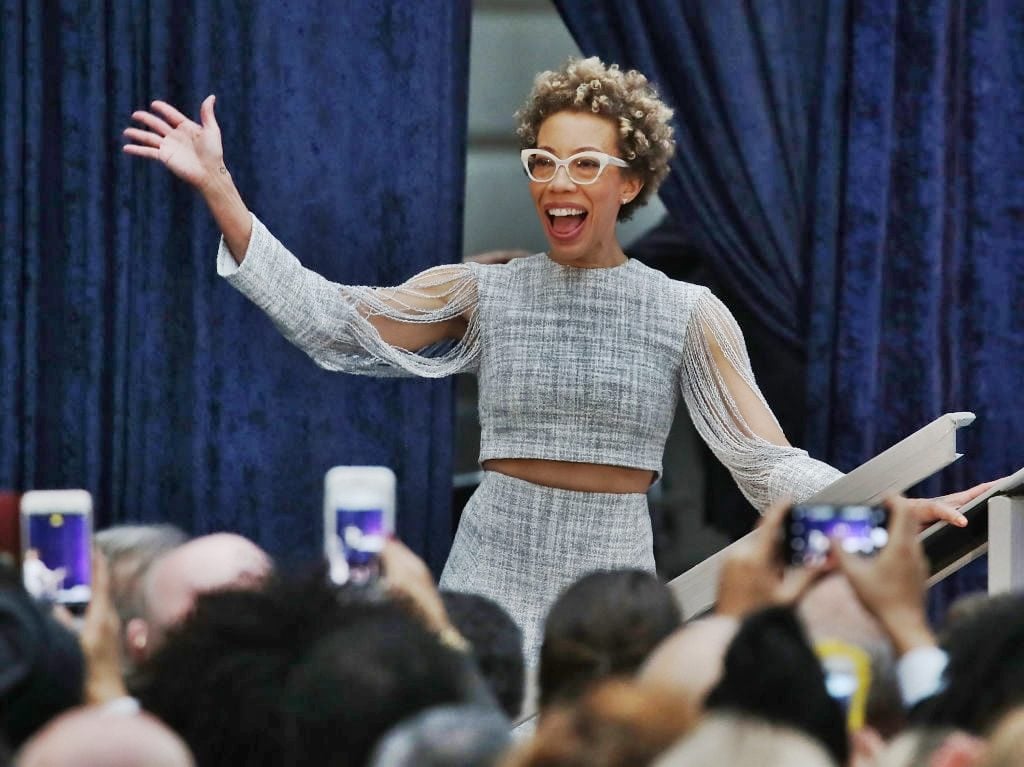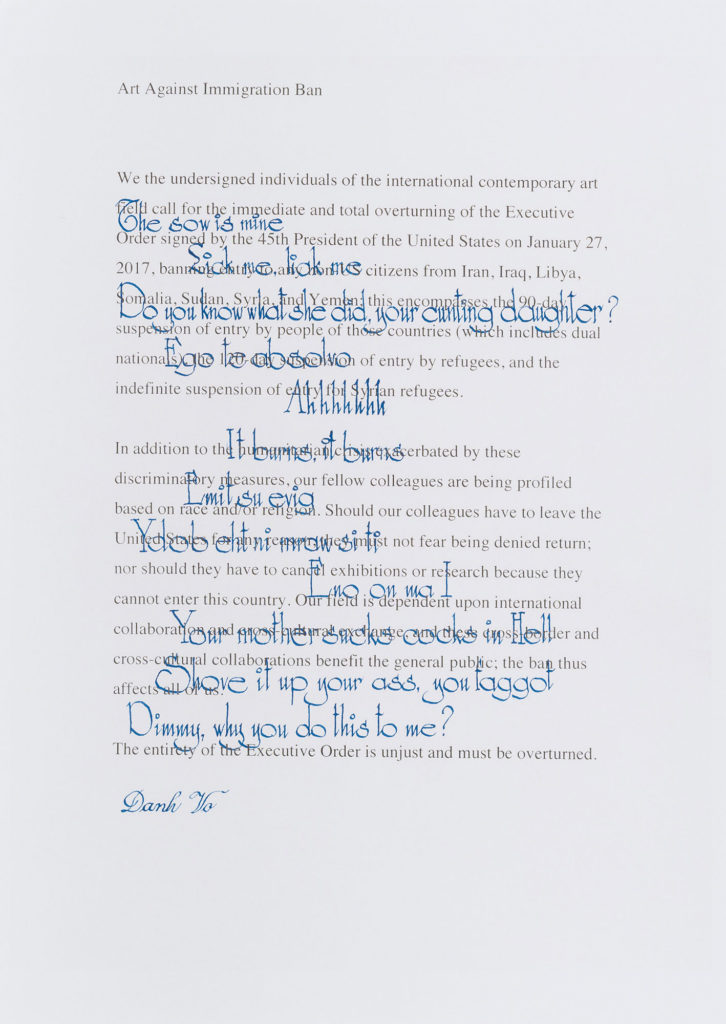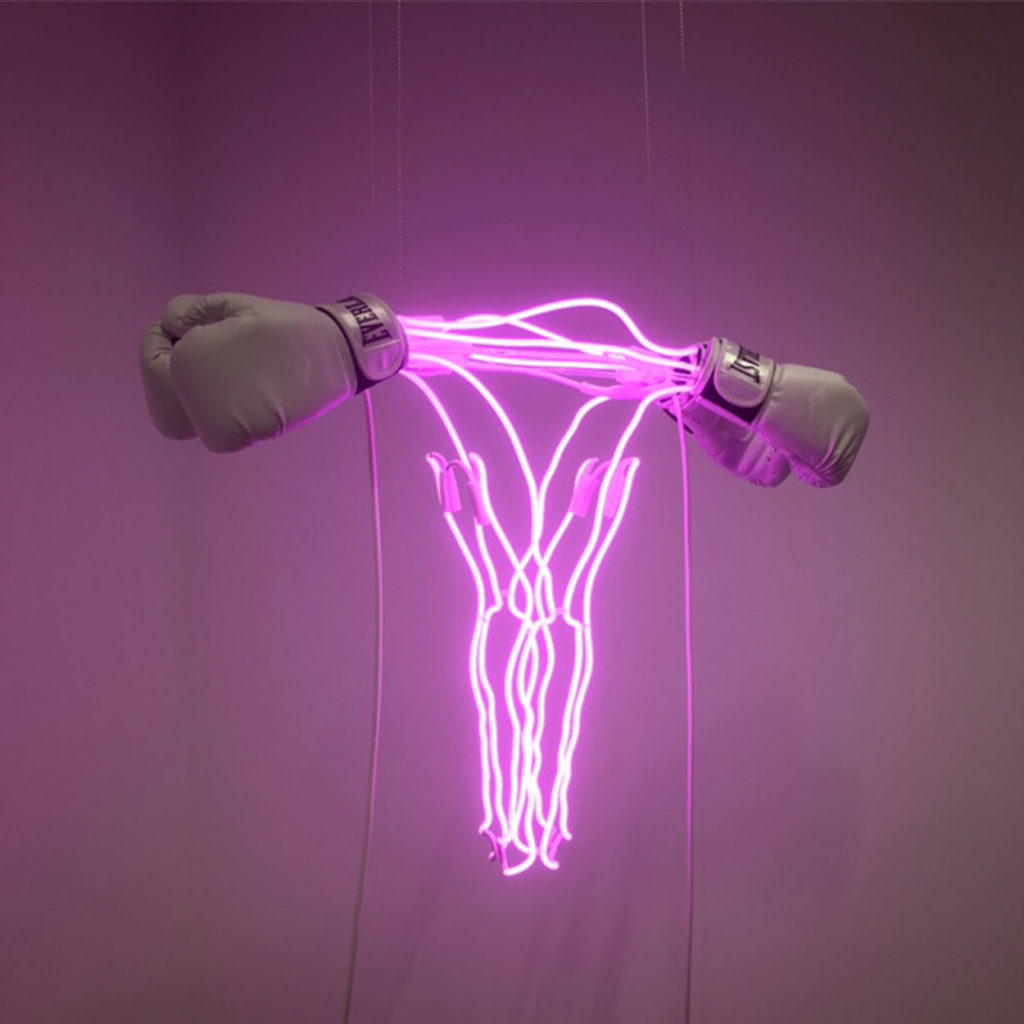
Art World
The Gallery System Is Struggling. Here’s What It Can Learn About Sustainability From the World of Professional Sports

Image: © Catherine Opie. Courtesy Regen Projects, Los Angeles and Lehmann Maupin, New York and Hong Kong.
With the average gallery now in worse shape than the shattered smile of a bare-knuckle boxer, the primary market has officially reached its “put up or shut up” moment. Every day seems to bring another announcement that a midlevel or modestly sized gallery has decided to call it quits. Often, these messages either allude to or openly rail against the increasingly winner-takes-all economics of the contemporary art trade. And yet we’ve seen few serious proposals for reform, and even less action.
High-end and mega-galleries now regularly lure away rising commercial stars from the galleries that helped develop these artists. Many buyers—particularly the vastly wealthy subset I refer to as COINs, or Collectors Only In Name—lack the time, the inclination, or both to immerse themselves in either art history or the gallery scene, especially those outside the Chelsea-Mayfair-H Queen’s axis. The realities of the attention economy therefore drive the business deeper into convention centers around the world for art fairs, where all sides of the industry converge for a few high-stakes days that can make or break exhibitors operating without an ample war chest.

Jeff Koons, One Ball Total Equilibrium Tank (Spalding Dr.J Silver Series (1985)
Image: Courtesy of Christie’s Images Ltd.
Image: Courtesy of Christie’s Images Ltd.
How undeniably bad have things gotten? So bad that David Zwirner, unsolicited, recently tossed out the concept of imposing an art fair “tax” on himself and his fellow mega-gallery peers to subsidize the participation of smaller galleries… before he, in the words of my colleague Kate Brown, “admitted that he did not know or care what an art fair booth costs these days.”
This may be one of the most unintentionally revealing moments of art-market class disparity since Jeff Koons declared, “I sometimes take a helicopter to travel to my farm, but I don’t live a luxurious lifestyle.” While respected mid-tier gallerists like Jose Freire are pulling out of fairs altogether because of the literal and figurative costs, those same costs don’t even qualify as consequential enough for Zwirner—whose gallery did 20 fairs in 2017 alone—to be able to estimate.
There’s been significant debate about the idea of an art fair tax in the weeks since, though the discussion around it has somewhat evolved. For instance, instead of charging a fee based on the cost of a heavyweight exhibitor’s booth, trailblazing gallerist Mitchell Algus suggested, in ARTnews, that exhibitors’ booth fees should be based on how much they sell at the fair.

Howardena Pindell, Video Drawings: Baseball (1973-1976).
Image: Courtesy of Garth Greenan Gallery.
Image: Courtesy of Garth Greenan Gallery.
Swinging for the Fences
With all due respect to these interesting proposals, they’re thinking too small. Much like recent American politics, the promise of implementing new taxes is a mirage mostly useful in distracting optimists and moderates from the full scale of the dysfunction we’re now embroiled in. Just as with gallery-share initiatives like Condo, what ultimately matters at fairs is whether or not buyers are actually acquiring the works exhibitors are showing. If not, even participating for free wouldn’t help struggling galleries keep their noses above water for long.
For this reason, debating the ins and outs of an art fair tax is like pretending that two people with years of disappointments, resentments, and broken promises between them can salvage their marriage by scheduling a weekly “date night”: It’s too little and too late to overcome how drastically the relationship has changed from an earlier era.
Such proposals reflect a mindset that still imagines an era when art was a boutique industry. As just one data point to illustrate the sea change that has overtaken the art world, collector and art-market analyst Alain Servais noted in his 2015 essay “Art in the Shadow of Art Market Industrialization” that total auction sales in the US, EU, and Hong Kong for contemporary art—defined as work made by artists born after 1950—increased roughly 21-fold between 2000 and 2013, from just $41 million to nearly $850 million.
And while we should always be cautious about treating the auction sector and the gallery sector as one-to-one, the qualitative changes mentioned earlier only underscore the extremes of wealth that have made it harder and harder for smaller galleries to compete with the bigger players. Now, the most successful galleries are selling their way into an altogether different league than everyone else.
So what do we do, then?

Jean-Michel Basquiat, Untitled (Boxing Ring) (1981).
Photo: acquavellagalleries.com
Photo: acquavellagalleries.com
A Sporting Solution
First, let’s establish this: Although I love galleries (and spent eight years working in them), there is no moral imperative for them to succeed.
Lost in the furor over the epidemic of gallery closures is the fact that the overwhelming majority of small businesses across industries are not long for this world. According to data from the US Small Business Administration, 80 percent of new American businesses close in their first year. Of the survivors, about half shut down within five years. Of those survivors, two-thirds never make it to their 10th anniversary. And rather than a recent phenomenon, these attrition rates have been “remarkably consistent over the years.”
Together, these stats suggest that gallerists would do well to remember former Indiana University men’s basketball coach Mike Davis, who once judged, “You’re not special unless you find a cure for death.”
It’s not just because of my brain’s well-documented penchant for drawing outlandish parallels that I bring up sports here. As preposterous as it would have seemed to me when I was a disaffected art kid growing up in Midwestern (American) football country, professional sports at least offer food for thought, if not a full game plan, for how the gallery sector could claw its way out of this mess.
And the best way to begin is by sussing out a sports-based solution to a single issue of consequence: the damage done to smaller galleries when their most in-demand artists (or estates) leave for the bright lights and greater promise of bigger galleries.

Adel Abdessemed, Headbutt (2012).
Photo: Jean-Pierre Dalbéra/Flickr.
Photo: Jean-Pierre Dalbéra/Flickr.
Over-matched Underdogs
Only a few years ago, the poaching of artists was seen as a stunning betrayal and a legitimate scandal. Georgina Adam notes in her essential 2013 book Big Bucks that a young Marianne Boesky was “devastated” when, after seven years of collaboration, Takashi Murakami departed her stable for Gagosian in 2006, and that mid-level Parisian gallerist Kamel Mennour claimed he plunged into a six-month depression after Adel Abdessemed left his roster for Zwirner in 2008.
Today, though, these types of transfers have become business as usual. When Hauser & Wirth announced “exclusive” representation of Amy Sheralda few months ago, the reaction around the industry mostly seemed to amount to a resigned shrug. (Monique Meloche, with whom Sherald has shown for years, was adamant that she will continue to work with the artist.)
But like injecting morphine before one of your limbs is hacked off by a cleaver, our current numbness to poaching doesn’t make its results any less harmful.
Losing an artist just as their career blasts into the stratosphere means that a gallerist loses years of investment in developing and promoting an artist, with little to show for it in return. Sure, their track record of successfully launching a career may make the jilted gallerist slightly more attractive to the next promising young talent looking for short-term guidance—but you can’t pay your rent with reputation.
Worse, as Edward Winkleman emphasizes in his 2014 book, Selling Contemporary Art: How to Navigate the Evolving Market, there could be a brutal second-order effect on the industry writ large: If mid-level gallerists collectively conclude that “nurturing artists during their post-emerging/pre-blue chip phase” is a fool’s errand, they’ll have no incentive to continue playing that role, and the entire midsection of the gallery ecosystem could cave in.

Artist Amy Sherald at the official portrait unveiling of former U.S. President Barack Obama and first lady Michelle Obama. Photo by Mark Wilson/Getty Images.
An Idea Still Kicking Around
The key, then, would be to create a system to financially incentivize smaller galleries to develop young or under-recognized artists, and establish a solid foundation for their market even if they later leave to climb the commercial pyramid.
In art-circuit speaking engagements in 2012, Servais proposed one such model (which subsequently appeared in the press via Scott Reyburn in 2013): the regulations on player transfers maintained by FIFA, the international governing body for football associations (meaning “soccer leagues,” for my fellow Yankees). The details are slightly more complex—the full relevant document swells to 83 pages—but the central tenet concerns the “solidarity contributions” required of bigger clubs before they can hire away rising stars from the clubs “involved in [their] training and education over the years.”
The gist is this: Between ages 12 and 23, any time a footballer moves between clubs, the acquiring club pays five to ten percent of the player’s compensation to the training clubs, pro-rated to account for when, and how long, they employed the player.
Rather than the training clubs being left with nothing when their time, effort, and money helps elevate a developmental player to pro-caliber, then, tangible rewards incentivize them to continue seeking out and coaching new faces with the potential for greatness.
Although the basic applicability to the gallery system is obvious, there are many, many terms that would need to be worked out before this system could be widely and sustainably implemented in the art world. What would be the equivalent age parameters? What type and amount of compensation would be involved in transfers? What investments on the gallery’s part would qualify as ample “training and education”?
Winkleman unpacks several options in Selling Contemporary Art, and I have my own answers on the minutiae. However, the crucial point is that none of the specific answers matter in light of larger, thornier obstacles that need to be overcome first.

Danh Vo, Art Against the Immigration Ban poster (2017). Courtesy of the Solomon R. Guggenheim Museum, New York.
Signing Bonus
If you’re thinking we can’t adopt transfer fees without widespread implementation of representation contracts between artists and gallerists, you’d be right. But there’s more to the story.
Vanishingly rare though they are, gallery representation contracts do exist today. (I was involved in executing one in my gallery days.) Still, they would need to become universal across tiers of the sector to make transfer fees workable. Which means, I think, that they need to start at the lower end of the commercial hierarchy.
Why? The mightiest commercial galleries have only one incentive to lead the way on this issue: Star artists’ increasing willingness to hopscotch between galleries as perpetual free agents. In recent years, big names like Richard Prince, Anish Kapoor, and Danh Vo have all proven willing to show at certain major commercial spaces without accepting ongoing representation. But these intra-tier transfers are not as deadly as when artists leap from a lower market tier to a higher one, because powerhouse galleries are so much better equipped to weather departures. Low risk equates to low pressure for change.
Since the impact of a rising artist’s departure is vastly more dangerous to smaller galleries, then, they should lead the way in shifting the paradigm. History shows that high-end galleries aren’t going to voluntarily reward them for developing artists. Which makes artist contracts a case where the best defense is a good offense.

Zoe Buckman, Champ. Photo courtesy of the artist.
Knuckling Up for the Next Round
As promising as this alternative appears, establishing simple contracts may not render smaller galleries bulletproof to losing hot artists for nothing.
The cold reality is this: If a big gallery learns that an artist it wants to acquire already has a “solidarity contribution” built into their contract with a smaller gallery, the big gallery will probably respond by either abandoning the pursuit altogether, or lawyering up to try to punch holes in the agreement to get the artist anyway.
Neither of these outcomes is healthy for the industry. In the first case, ambitious artists—and perhaps all artists—would likely villainize contracts and their current galleries as career impediments. In that sense, the poison pill in the agreement breaks open and seeps into the existing relationship, perhaps leading to either the same premature end or a miserable lame duck period for artist and gallerist alike.
In the second case (lawyering up), it’s entirely plausible that a big gallery’s high-dollar legal counsel could find enough vulnerabilities in the artist’s agreement with his current gallery to get it shredded—or, even more likely, to simply threaten a war of attrition that the smaller gallery can’t afford to defend against. (If you want to know what it’s like to be hopelessly out-spent by the opposing party in court even if the evidence is on your side, look at what OJ Simpson’s gilt-edge legal team did to Marcia Clark in his 1995 murder trial.)
This means it’s to everyone’s advantage—small galleries, big galleries, and artists—to strive for a transfer system that all parties can agree on. And the only way to make this seeming fantasy a reality is to engage in the kinds of processes that established the rules now governing relative harmony in industries as disparate as American movies, automotive manufacturing, and yes, professional sports: unionization and collective bargaining.
We’ll walk through the possibilities and pitfalls of that future in the second installment.
Follow artnet News on Facebook:
Want to stay ahead of the art world? Subscribe to our newsletter to get the breaking news, eye-opening interviews, and incisive critical takes that drive the conversation forward.
SHARE

No comments:
Post a Comment